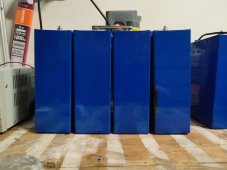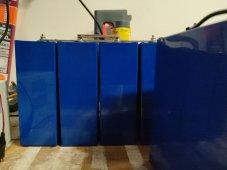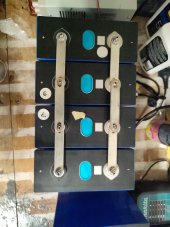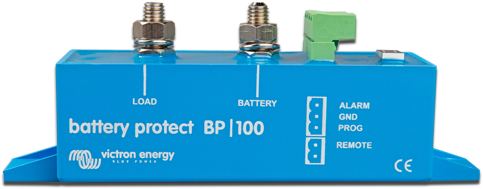Unfortunately my DCC300a contactor failed and my some of my 280AH EVE cells ( 8s1p 24v bank) were extremely overdischarged.
Just over 1v on each cell.
I brought the cells back up to 3v relatively slowly and have pulled out the few cells that have evidently bloated to some degree (see pictures).
Do I cut my losses on the bloated cells? Or is recovery possible.
I attached some pictures of the bloated cells. Fortunately the other 4 cells seem to have gotten away without much if any expansion. I'm currently top balancing them.



Just over 1v on each cell.
I brought the cells back up to 3v relatively slowly and have pulled out the few cells that have evidently bloated to some degree (see pictures).
Do I cut my losses on the bloated cells? Or is recovery possible.
I attached some pictures of the bloated cells. Fortunately the other 4 cells seem to have gotten away without much if any expansion. I'm currently top balancing them.








